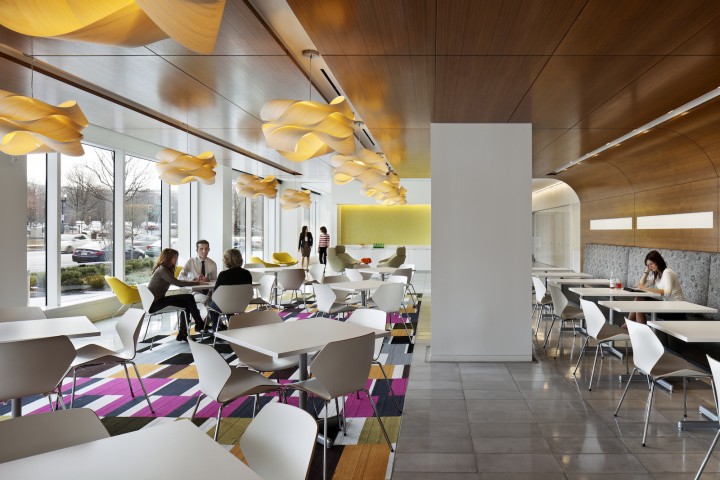
This is the final posting in a series of three summaries to showcase the winners of the Work Design Now 2013 competition, sponsored by the wonderful folks at Haworth. Get acquainted with the project through this recap and video, then settle in to 25+ pages of images, floor plans, and inside scoop in the full case study. If you like what you see (and we know you will), submit your latest project for consideration to win the same coverage in this year’s competition. The deadline is April 15. Click here for everything you’ll need to know about submitting your project for Work Design Now 2014.
Case study:
Click here to read the full McDermott Will & Emery case study: Change Management, Engagement, and Space Metrics in Law Office Design
The case study is chock full of images, floor plans, and interviews with McDermott Will & Emery employees, a Haworth workplace strategist, our very own Bob Fox, and the design team from Gensler.
Summary:
The law firm McDermott Will & Emery increased its prestige, utilization, productivity, and scalability within its new Capitol Hill office in Washington, DC by:
1. Reinventing its brand by reinvigorating a building across from Union Station; one with breathtaking, 360-degree views of Washington, DC.
2. Using the old space to prototype new design ideas, test layouts, and explore alternative ways of working among secretarial and legal staff.
3. Implementing a change-management strategy that engaged multiple generations in the design process and expanded its use of secretarial teams, which achieves a 6 attorneys to 1 secretary ratio while increasing administrative support availability to 12 hours per day.
4. Designing an office with flexible spaces ranging from 628-705 square feet per attorney — down from the previous average of 835 — while maintaining privacy, centralized hubs for casual collisions, and comfortable spots for generating new ideas.
As a result, since moving into its new office in December 2012, MWE is experiencing a rush of new growth from new and existing clients, a deeper connection among its employees and the greater Washington community, and a rebirth of its brand that will last for decades to come. By prioritizing its people and the place in which they conduct important business, MWE effectively serves as a case study for other law offices considering innovative new office designs with collaborative team structures that maximize flexibility, promote engagement, and accelerate growth.
Take the tour:
We’re re-publishing this now to show off what you could win when you submit your latest project for this year’s competition. The top three submissions will get this same treatment: We’ll travel to your city, film on location, interview the key people involved, and write up a case study — just like this one, above, for McDermott Will & Emery. And even if you don’t make the top three, exceptional projects like this one about a historic restoration project in Milwaukee, submitted last year by Zimmermann Architectural Studios, will be covered in a short article here on the site.
So what are you waiting for? Submit your latest project for Work Design Now 2014 today! The deadline is April 15.



